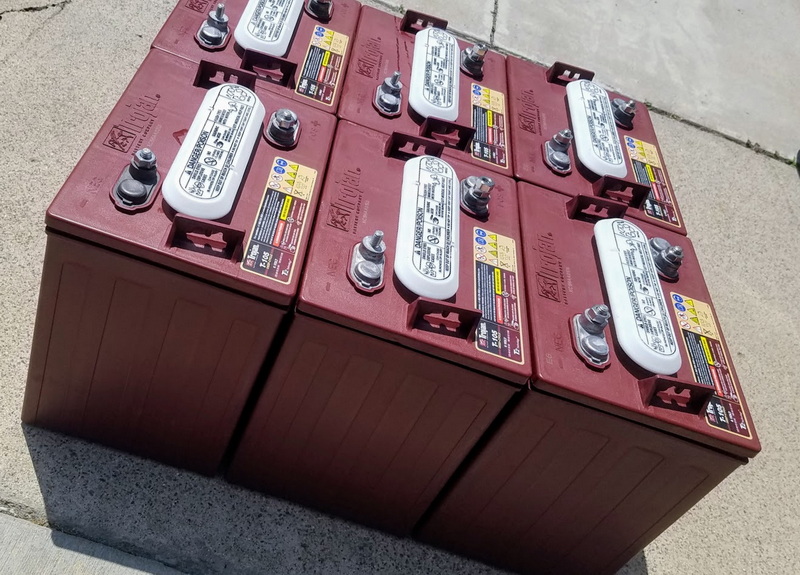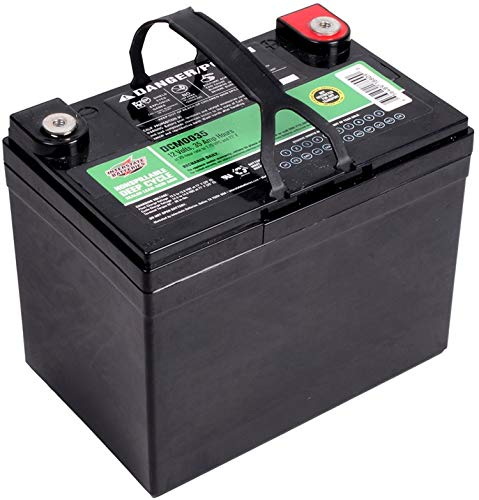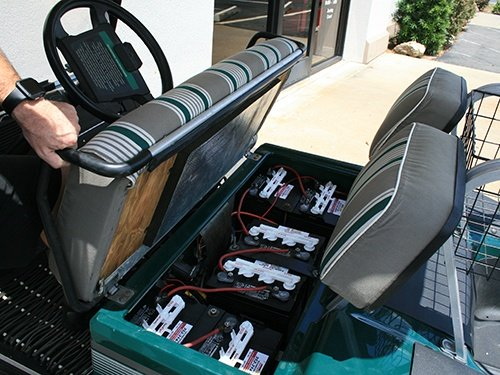Content Menu
● Types of Electric Golf Cart Batteries
>> Lead-Acid Batteries
>> Lithium-Ion Batteries
>> Gel Batteries
● Cost Breakdown
● Factors Influencing Battery Costs
● Maintenance Tips for Electric Golf Cart Batteries
>> Regular Charging
>> Water Levels
>> Clean Terminals
>> Equalization
>> Store Properly
● Signs of Battery Failure
● Choosing the Right Battery for Your Golf Cart
>> Usage
>> Budget
>> Weight Considerations
>> Environmental Conditions
● Conclusion
● Frequently Asked Questions
>> 1. How long do electric golf cart batteries last?
>> 2. Can I use regular car batteries in my golf cart?
>> 3. How often should I charge my golf cart batteries?
>> 4. What is the best type of battery for a golf cart?
>> 5. How can I tell if my golf cart batteries need to be replaced?
Electric golf carts have become increasingly popular for both recreational and practical uses. Whether you're cruising around a golf course, navigating a large property, or simply enjoying a leisurely ride, the performance of your golf cart heavily relies on its battery. Understanding the costs associated with electric golf cart batteries is essential for any owner or potential buyer. In this article, we will explore the different types of batteries available, their costs, maintenance tips, and much more.

Types of Electric Golf Cart Batteries
When it comes to electric golf cart batteries, there are primarily three types: lead-acid, lithium-ion, and gel batteries. Each type has its own advantages and disadvantages, which can affect both performance and cost.
Lead-Acid Batteries
Lead-acid batteries are the most common type used in electric golf carts. They are relatively inexpensive and widely available. There are two main subtypes of lead-acid batteries:
- Flooded Lead-Acid Batteries: These are the traditional batteries that require regular maintenance, including checking water levels and equalizing charges. They are typically the least expensive option, costing between $100 to $200 each.
- Sealed Lead-Acid Batteries (AGM and Gel): These batteries are maintenance-free and can be installed in any position. AGM (Absorbent Glass Mat) batteries are more durable and have a longer lifespan than flooded batteries, while gel batteries are known for their deep discharge capabilities. The cost for these batteries ranges from $200 to $400 each.
Lithium-Ion Batteries
Lithium-ion batteries are becoming increasingly popular due to their lightweight design and longer lifespan. They can last up to five times longer than lead-acid batteries and require less maintenance. However, they come with a higher price tag, typically ranging from $500 to $1,500 per battery.
Gel Batteries
Gel batteries are a type of sealed lead-acid battery that uses a gel electrolyte instead of liquid. They are less prone to leakage and can handle deep discharges better than traditional flooded batteries. The cost of gel batteries is similar to that of AGM batteries, generally falling between $200 and $400.
Cost Breakdown
The total cost of electric golf cart batteries can vary significantly based on the type and number of batteries required. Most golf carts use six 6-volt batteries or four 12-volt batteries. Here's a breakdown of potential costs:
- Lead-Acid Battery Set: A set of six flooded lead-acid batteries can cost around $600 to $1,200, depending on the brand and quality.
- AGM Battery Set: A set of six AGM batteries may cost between $1,200 and $2,400.
- Lithium-Ion Battery Set: A complete lithium-ion battery system can range from $2,500 to $5,000, depending on the capacity and brand.
Factors Influencing Battery Costs
Several factors can influence the cost of electric golf cart batteries:
1. Brand: Well-known brands often charge a premium for their products due to their reputation for quality and reliability.
2. Capacity: Higher capacity batteries that can store more energy will generally cost more.
3. Warranty: Batteries with longer warranties may have a higher upfront cost but can save money in the long run due to reduced replacement frequency.
4. Local Market: Prices can vary based on location and availability. It's always a good idea to shop around and compare prices from different retailers.

Maintenance Tips for Electric Golf Cart Batteries
Proper maintenance can extend the life of your golf cart batteries and ensure optimal performance. Here are some essential maintenance tips:
Regular Charging
Always charge your batteries after each use. Avoid letting them discharge completely, as this can significantly reduce their lifespan. Ideally, you should charge your batteries overnight after every use to ensure they are fully charged for the next outing.
Water Levels
For flooded lead-acid batteries, check the water levels regularly and top them off with distilled water as needed. This helps prevent sulfation and keeps the batteries functioning properly. It's important to check the water levels at least once a month, especially during hot weather when evaporation can occur more rapidly.
Clean Terminals
Keep the battery terminals clean and free from corrosion. Use a mixture of baking soda and water to clean any buildup, and ensure the connections are tight. Corroded terminals can lead to poor performance and may even damage the batteries over time.
Equalization
For flooded batteries, perform an equalization charge periodically to balance the cells and prevent stratification. This process involves charging the batteries at a higher voltage for a short period, which helps equalize the charge across all cells.
Store Properly
If you're not using your golf cart for an extended period, store the batteries in a cool, dry place and keep them charged to about 50%. This helps prevent deep discharge and prolongs battery life.

Signs of Battery Failure
Being aware of the signs of battery failure can help you address issues before they become serious. Common signs include:
- Reduced runtime: If your golf cart doesn't run as long as it used to, it may be time to replace the batteries.
- Swelling: Batteries that are swollen or misshapen may be failing and should be replaced immediately.
- Leaking: Any signs of leakage indicate a serious problem and require immediate attention.
- Strange odors: If you notice a sulfur smell, it could indicate a battery leak or failure.
- Diminished power: If your golf cart struggles to climb hills or accelerate, it may be a sign that the batteries are losing their capacity.
Choosing the Right Battery for Your Golf Cart
When selecting a battery for your golf cart, consider the following factors:
Usage
Think about how you plan to use your golf cart. If you use it frequently for long distances, investing in higher-capacity lithium-ion batteries may be worth the cost. For occasional use, lead-acid batteries may suffice.
Budget
Determine your budget for battery replacement. While lithium-ion batteries are more expensive upfront, their longevity and lower maintenance costs can make them a better investment over time.
Weight Considerations
Lithium-ion batteries are significantly lighter than lead-acid batteries, which can improve the overall performance and efficiency of your golf cart. If weight is a concern, consider opting for lithium-ion.
Environmental Conditions
Consider the climate in which you will be using your golf cart. If you live in an area with extreme temperatures, lithium-ion batteries may perform better than lead-acid batteries, which can be affected by temperature fluctuations.
Conclusion
Understanding the costs associated with electric golf cart batteries is crucial for any owner. With options ranging from lead-acid to lithium-ion, there are various factors to consider, including initial costs, maintenance, and lifespan. By choosing the right battery type and following proper maintenance practices, you can ensure your golf cart remains reliable and enjoyable for years to come.
In summary, the cost of electric golf cart batteries can vary widely based on type and brand. Lead-acid batteries are the most affordable option, while lithium-ion batteries offer superior performance at a higher price. Regular maintenance is key to prolonging battery life and ensuring optimal performance.

Frequently Asked Questions
1. How long do electric golf cart batteries last?
The lifespan of electric golf cart batteries varies by type. Lead-acid batteries typically last 3 to 5 years, while lithium-ion batteries can last 5 to 10 years with proper maintenance.
2. Can I use regular car batteries in my golf cart?
No, regular car batteries are not designed for deep-cycle use and may not provide the necessary power or longevity for golf carts. It's best to use batteries specifically designed for golf carts.
3. How often should I charge my golf cart batteries?
You should charge your golf cart batteries after every use. Avoid letting them discharge completely, as this can significantly reduce their lifespan.
4. What is the best type of battery for a golf cart?
The best type of battery depends on your usage and budget. Lithium-ion batteries offer the best performance and longevity, while lead-acid batteries are more affordable upfront.
5. How can I tell if my golf cart batteries need to be replaced?
Signs that your golf cart batteries may need replacement include reduced runtime, swelling, leaking, strange odors, and diminished power. If you notice any of these signs, it's time to consider replacing your batteries.











































